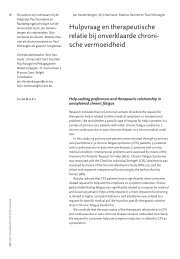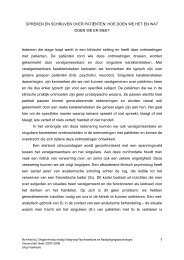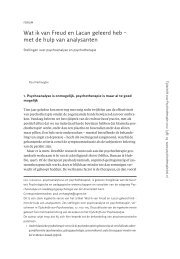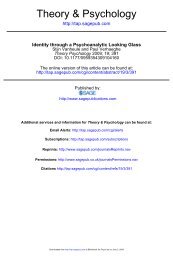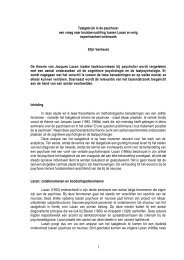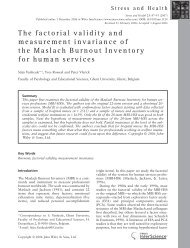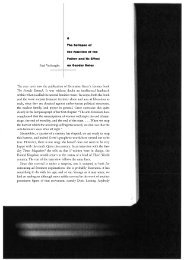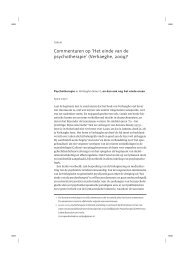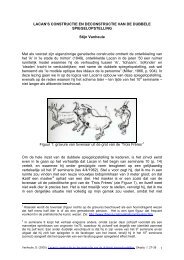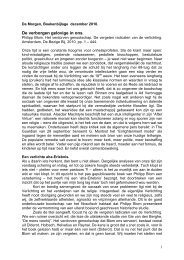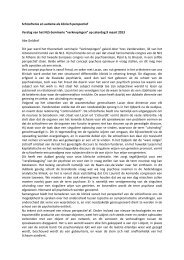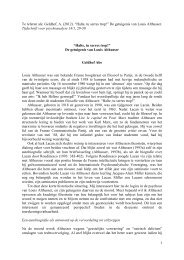psychotherapy and research
psychotherapy and research
psychotherapy and research
Create successful ePaper yourself
Turn your PDF publications into a flip-book with our unique Google optimized e-Paper software.
STIJN VANHEULE 97condition frequently used in <strong>psychotherapy</strong> <strong>research</strong> is called ‘treatment asusual’. Seldom is it defined what this ‘treatment as usual’ looks like (Weiss,Catron & Harris 2000; Westen, Novotny & Thompson-Brenner 2004),although it has been agreed upon that this condition should be representativeof treatments actually applied in the intended reference population(Tansella et al. 2006). If it is not CBT or psychoanalytic, interpersonal orclient-centred therapy, then what is it? Moreover, if some psychotherapistcan be found who is willing to deliver this barely imaginable therapy that isboth nothing <strong>and</strong> everything, <strong>and</strong> which nobody believes in, is it not selfevidentthat the allegiance effect discussed earlier will explain what it is allabout? After all, the allegiance effect learns that precisely a therapist’scommitment to a certain type of therapy is a most powerful explanatoryvariable for the outcome of <strong>psychotherapy</strong>. Experimental therapies areinterventions that collaborators to a study are strongly committed to, while‘treatments as usual’ are included with the aim of serving as a contrast.Westen, Novotny <strong>and</strong> Thompson-Brenner (2004) consider the latter as‘intent-to-fail’ against which the superiority of the experimental condition isto be proven (see also Wampold et al. 1997).The proper <strong>and</strong> effective use of RCTs in <strong>psychotherapy</strong> <strong>research</strong> is lessself-evident than we might suppose. Essential characteristics like applyingtrue blinding in a trial, realizing r<strong>and</strong>omization in which patients are blindto the nature of treatments, <strong>and</strong> using a proper, rather than intent-to-failcontrol condition, are all inherently problematic. As a result we might questionwhat applications of RCTs in <strong>psychotherapy</strong> can genuinely contribute.Can these ever be as stringent as in medical <strong>research</strong> without neglectingessential characteristics of <strong>psychotherapy</strong>? The risk we run by attuning<strong>psychotherapy</strong> to the RCT model is that its basic tenets become eroded. Byincluding <strong>psychotherapy</strong> in RCTs, a price is paid. Whereas in medical<strong>research</strong>, pharmaceuticals are typically discovered <strong>and</strong> refined in laboratoryconditions as well as tested in RCTs before they are introduced in clinicalsituations, psychotherapeutic interventions arise from clinical practice itself,<strong>and</strong> not from the laboratory (Goldfried & Eubanks-Carter 2004; Westen &Bradley 2005). Psychotherapy that is attuned to or developed within an RCTformat (I will call it ‘RCT <strong>psychotherapy</strong>’) is thought to have the academicadvantage of creating clean experimental conditions with good internalvalidity, which enables <strong>research</strong>ers to draw conclusions about the causalityof changes in patients. Yet the disadvantage is that, by st<strong>and</strong>ardizing <strong>psychotherapy</strong>into packages, conditions are created that are antithetical to clinicalpractice.The constituent elements of those packages are initially drawn fromclinical practice. But these are then significantly adapted to fit experimentalconditions <strong>and</strong> then re-presented as informative for clinical practice. Thislast step is based on beliefs which are not proven <strong>and</strong> have hardly beenstudied.Whereas in RCTs internal validity is usually optimal, external validity– meaning the pragmatic usefulness in clinical practice – is often



